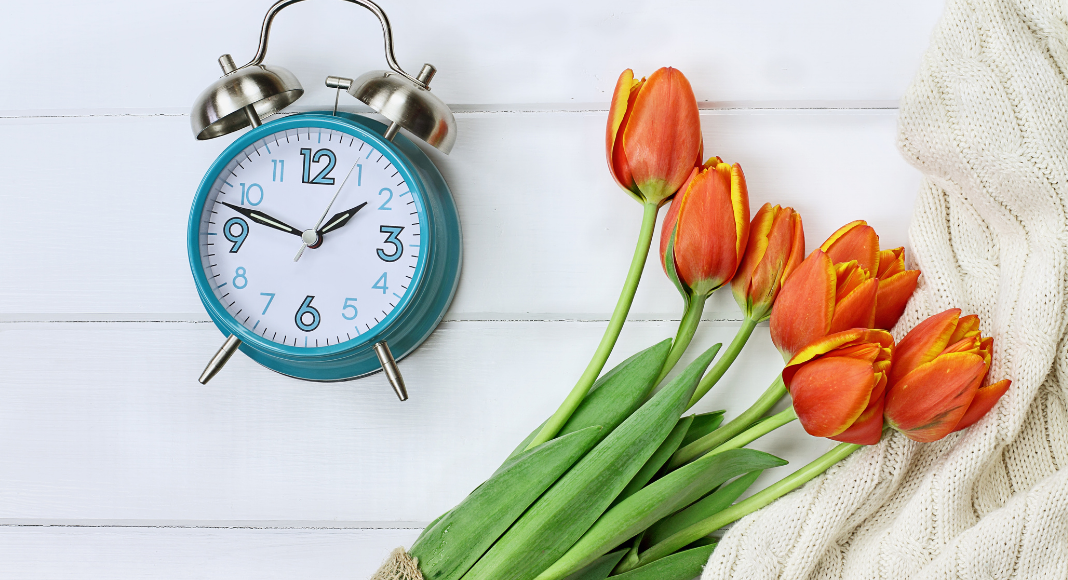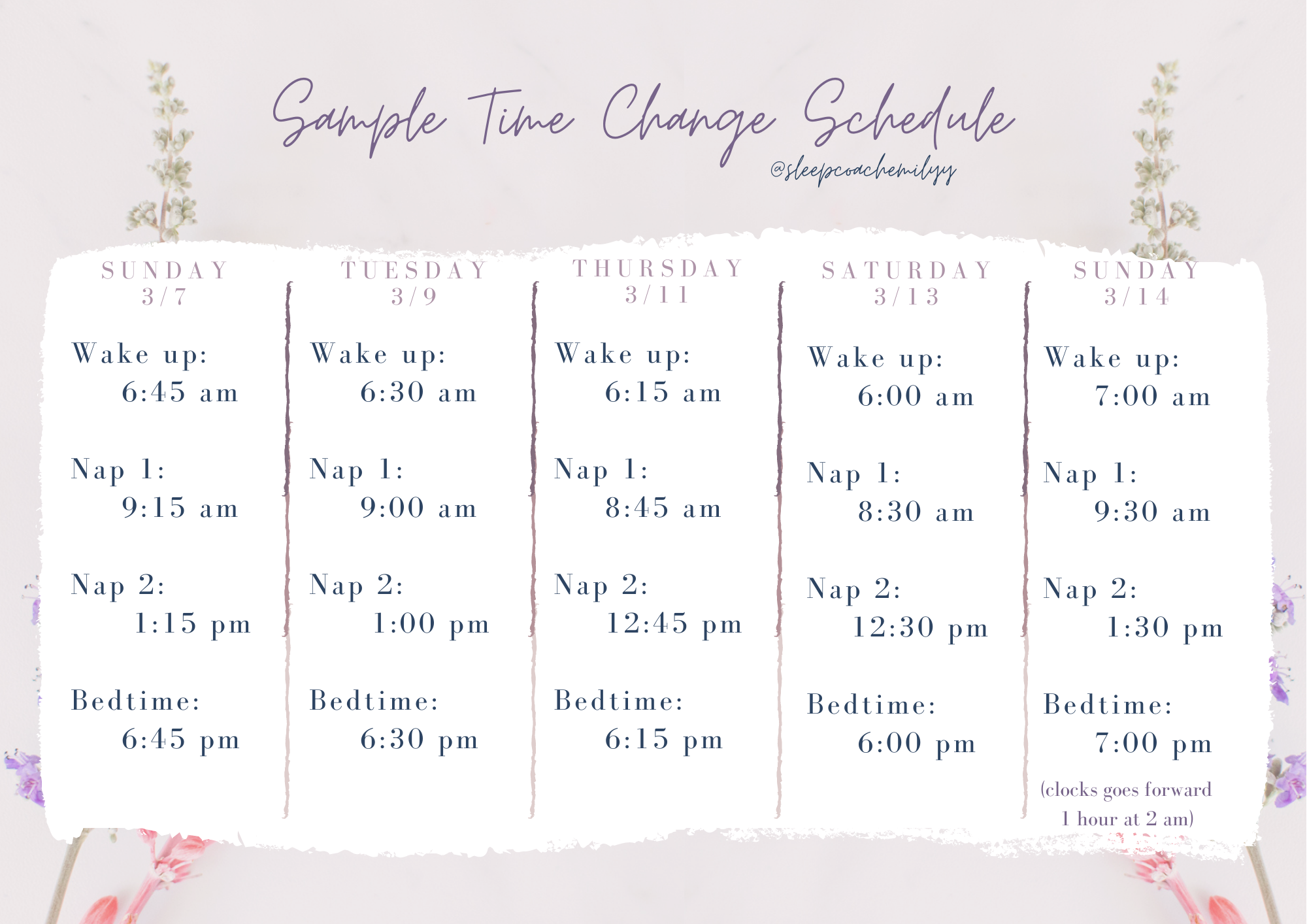 The clocks change yet again on March 14th. Even though this ritual feels completely antiquated and terrible for our sleep, it keeps happening. Jumping forward an hour can be difficult. It can cause some sleep struggles for our littles and even for ourselves, as it messes with our natural circadian rhythms.
The clocks change yet again on March 14th. Even though this ritual feels completely antiquated and terrible for our sleep, it keeps happening. Jumping forward an hour can be difficult. It can cause some sleep struggles for our littles and even for ourselves, as it messes with our natural circadian rhythms.
Three Options to Deal with the Time Change
Gradual Change
Starting about a week out, you will start moving the schedule a little bit earlier. So say normal wake up is 7am, nap at 9:30 and 1:30, bed around 6:30. The first day you will move everything 15 minutes earlier: 6:45, 9:15, 1:15, 6:15. Continue to bring those times back every couple of days until you are a full hour sooner. Then Sunday morning, they will be waking at their normal time and you continue with the old schedule.⠀

Cold Turkey
If you have kids who are flexible and adaptable, this is the way to go. You basically do nothing. There is no prep work that goes into this. You just wake up and continue to follow the clock like you normally would. Don’t think about “old time” just keep following the “new time”. It might take a couple of days to completely work out, but most kids adjust pretty well.
Schedule Shift
On Sunday, when you look at the clock, your child has awoken a whole hour later than normal. You can ATTEMPT to use this as a chance to make wake-up time later and put nap and bedtimes a little later. This will work for some kids however, for most they will fall back into their own schedule once everyone gets used to the “new” time.
Tips to Encourage Sleep
Sunshine
Getting outside during the daylight hours is important for a healthy sleep/wake cycle. Your circadian rhythm is basically an internal clock that signals when you should be asleep or awake. Although many factors affect it, a major outside factor is in response to lightness and darkness. Being out in the daylight helps your body wake up during the day and work towards its sleep cycle when it becomes dark.
Active Play
Studies show a correlation between exercise and improved sleep duration and quality. Although most of these studies are done in adults, this is true for kids too. Being active helps increase sleep pressure (the biological response that makes us want to go to sleep). Think about how on a long day of swimming or hiking or playing soccer, your kid goes to bed with just a little less protest. Maybe they even sleep in a little longer than usual.
Routines
Kids thrive on routine and predictability. It helps them to feel organized, stable and secure. It’s important to keep up any morning, nap, or bedtime routines that your child is used to. This will continue to signal when it is the appropriate time to be going to sleep.










